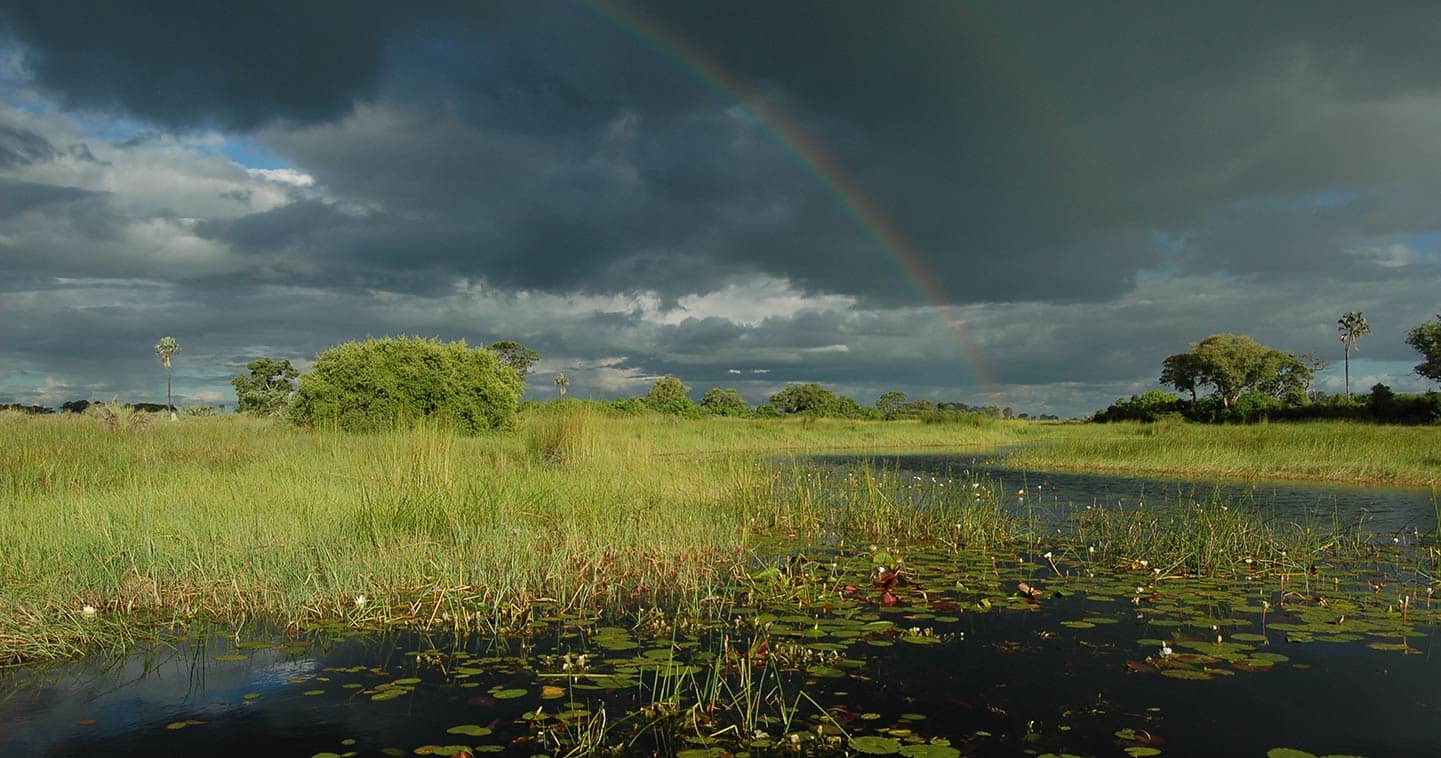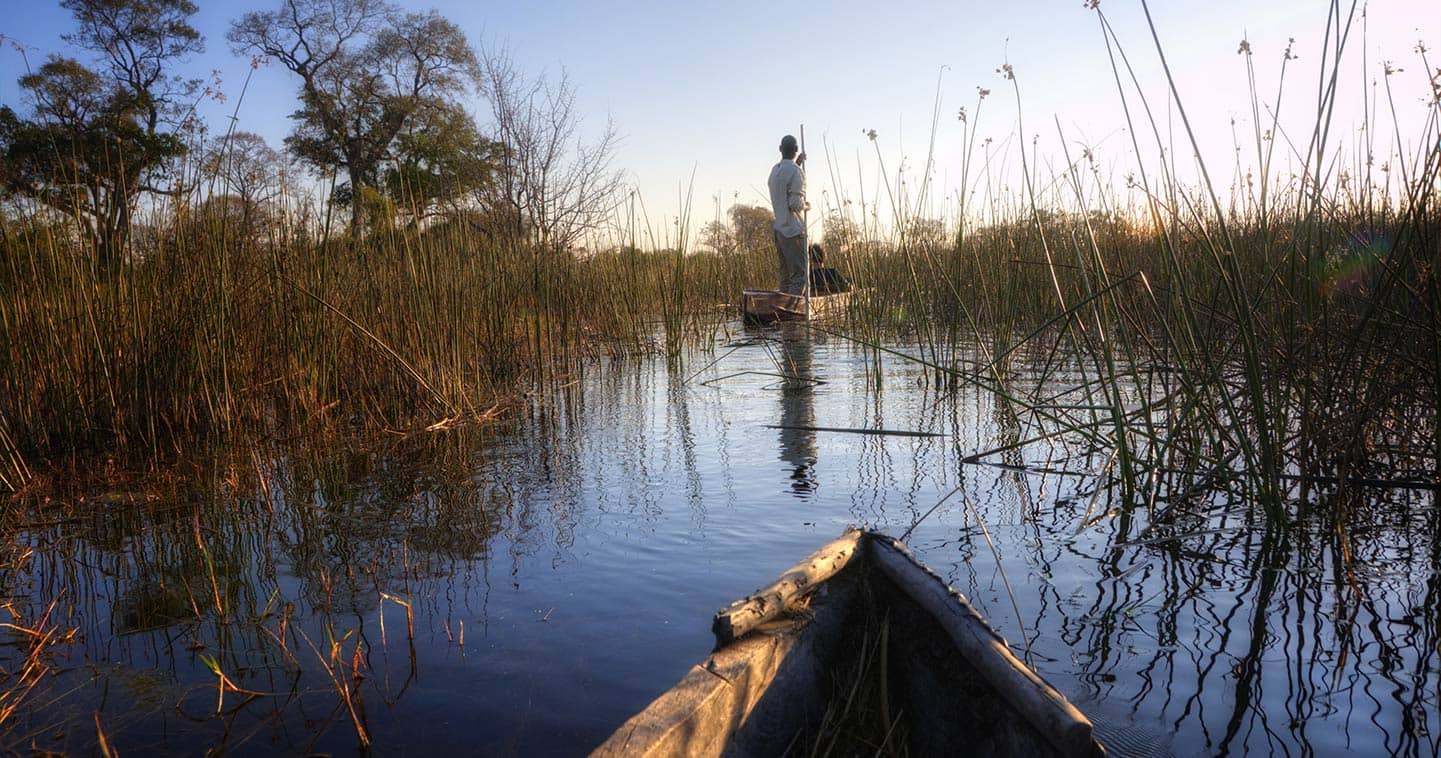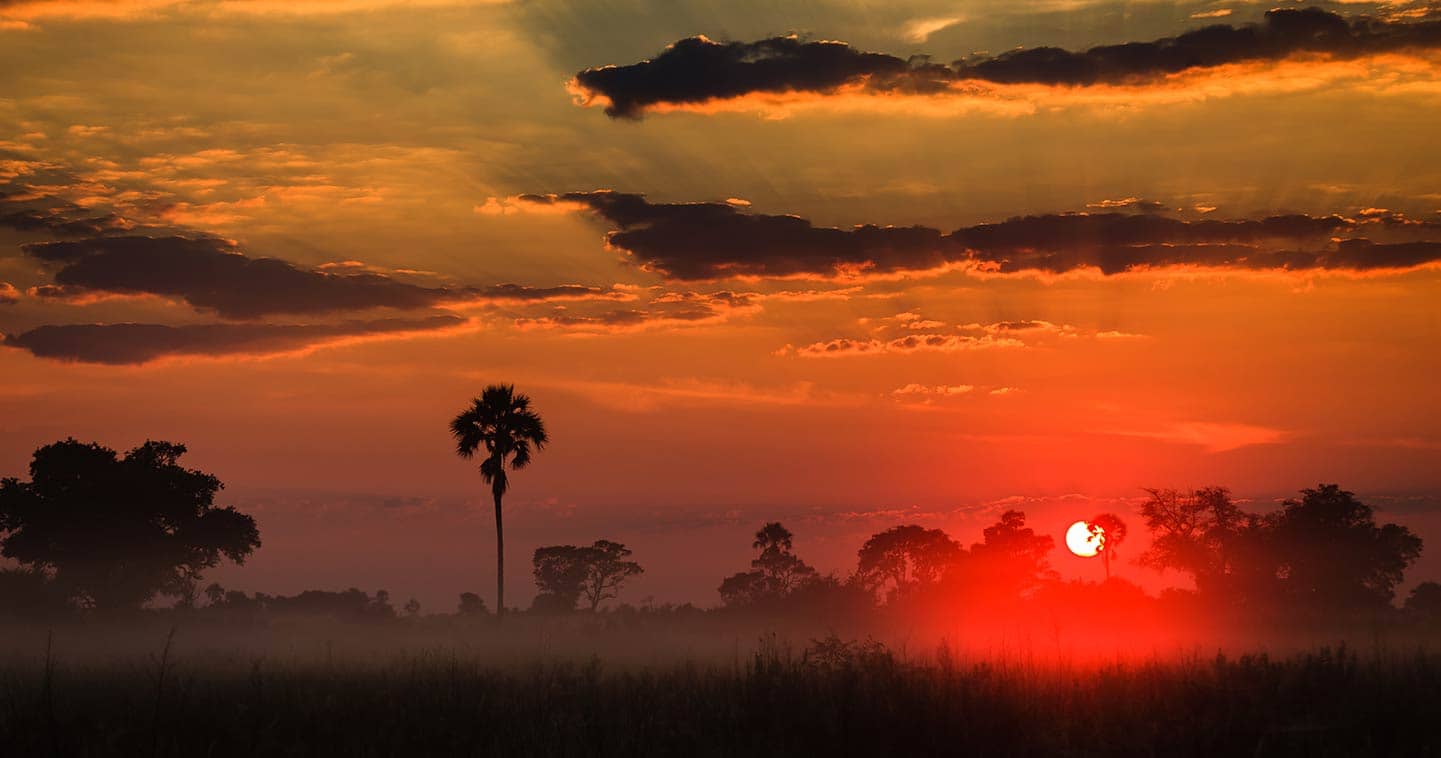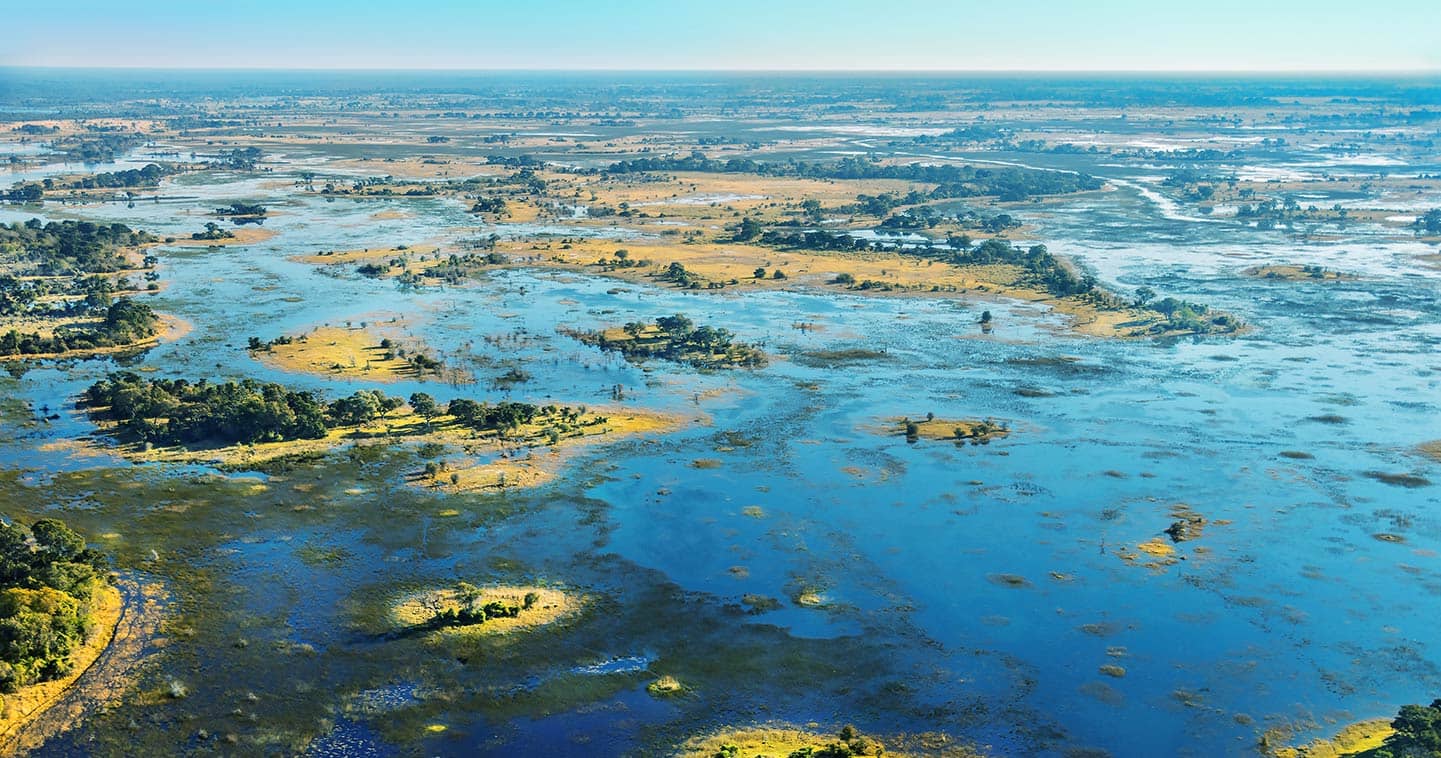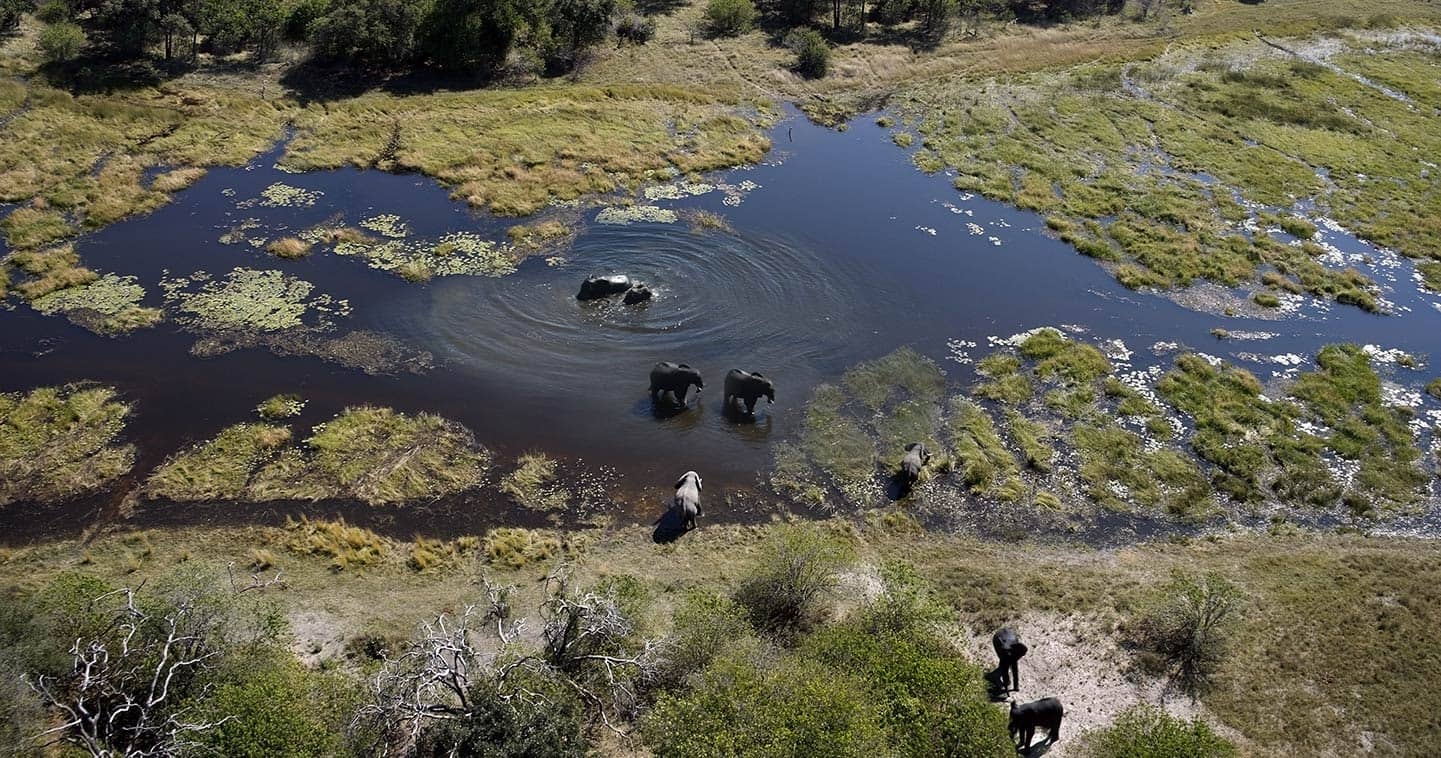Best time to visit Okavango Delta
When to visit the Delta
Before you plan your trip to this part of Africa, it is important to determine where you want to stay and what to expect from your visit. We would love to provide a simple ‘this is the best time to visit’, but there is no such thing when it comes to Botswana. The Okavango Delta changes dramatically with the seasons, but this is definitely a year-round destination.
What we can tell you upfront, is that soon after your arrival you will discover that the Okavango Delta isn’t just about game or birds (surprise!). No, the ambience of broad skies, constantly changing colours and the warm African breeze - while you gently float through lily-padded waterways - that is what will make you come back to Botswana.
The seasons of the Okavango Delta
Well, that all sounds fair and nice; but how do you determine when is the best time for you to go? The Okavango Delta knows both wet and dry seasons. Most tourists pick the dry season for a visit, but the rainy season is definitely worth considering. During the wet season most accommodations have less visitors, so you are in for a very personal experience. Also child policies can be more flexible in this period. However, the Okavango’s small camps and lodges never feel too crowded, even when they are full.
Here’s a little bit about both seasons.
Dry season - May to November
- Ideal for a first time Africa trip
- Nights in the Okavango are never below freezing and the days are seldom unbearably hot
- Note that in November the weather is variable: rain or shine, hot or cold
Wet season - December to April
- January and February are the rainiest months
- Spectacular skies can change within minutes from cloudy to sunny to cloudy again
- Showers are usually short and heavy, but there are days when the sky remains grey
- Waterproof clothing is necessary, but the rain doesn’t need to stop you from doing anything
Okavango Delta water levels
It is important to understand that water levels in the Okavango Delta do not follow the pattern of the rains: the annual water flow arriving in the Okavango Delta precedes or follows the rainy season. This means that Okavango Delta water levels are at its highest point in the dry season. Going by the rule of thumb, water in the inner Delta starts to flow in June (when it arrives from the Angolan Highlands): this is also the month that the Okavango Delta has become very dry. In July water levels reach their highest point with much of the Okavango Delta filling up: this is also the period in which more and more water based activities (such a mekoro excursions) become possible. By the end of August most of the water has passed throught the Delta and will reach Maun after which it dissappears in the Kalahari Desert. This means that from September onwards water levels begin to drop.
Activities in the seasons
Water levels will affect the activities during your trip: some camps are only able to offer mekoro (a traditional canoe) excursions when water levels are high enough, a few months out of the year. On the flip side, some game drives are only possible when water levels are low enough. It is all about flowing with the tides in the Okavango Delta. Please note that activities included in an accommodation rate are displayed on each individual accommodation description page in the side bar on the right hand side. Here it is outlined whether an accommodation offers water based activities (and whether these are seasonal) or not.
Please note that in Africa the weather is harder to predict these days. But as long as you look at the Okavango Delta as an entirely amazing experience, you will fully enjoy it.

